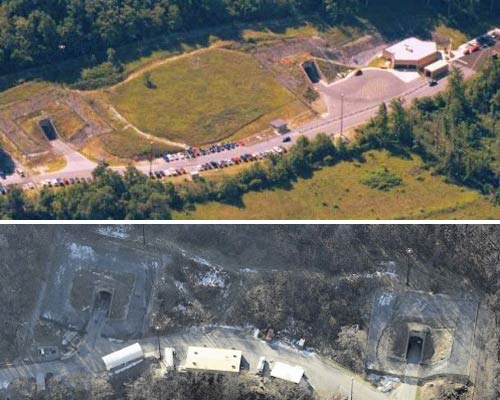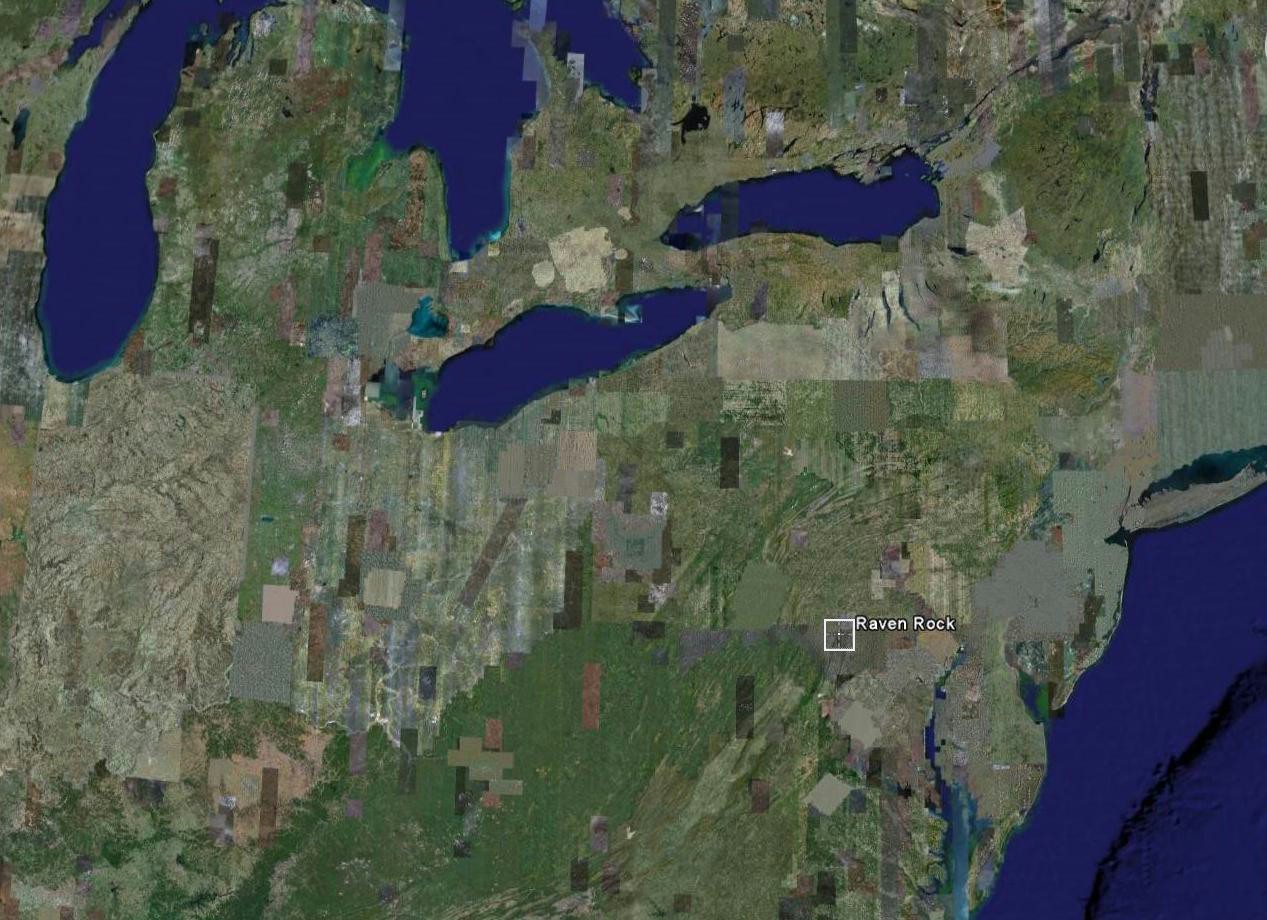An underground complex, built by the Department of
Defense as an emergency shelter and electronic
control center. Located underneath 650 acres in the
hills near the Pennsylvania/Maryland border,
Raven Rock, AKA "Site R", reportedly had a full-time
staff of 350 for much of the Cold War. Officially now
called the Alternate Joint Communications Center, the
bunker went on-line in 1954. Representatives of all
the military departments and the Joint Chiefs of Staff
for the federal government were reportedly located here
as a contingency against a wipeout of the command
structure in the event of a nuclear war.
The site has 700,000 square feet of interior space,
and enough room for 3,000 people. A new tenant is the
Defense Information Systems Agency, Western Hemisphere,
which operates the communication and command center
located in the bunker. It is still used as a Continuity
of Government location, and Dick Cheney is said to have
stayed here after the September 11, 2001 terrorist attack.
Site R was supported by nearby Fort Ritchie, MD, a 638
acre Army post, with over 2,000 employees.
It is now administered out of Fort Detrick, MD.
|
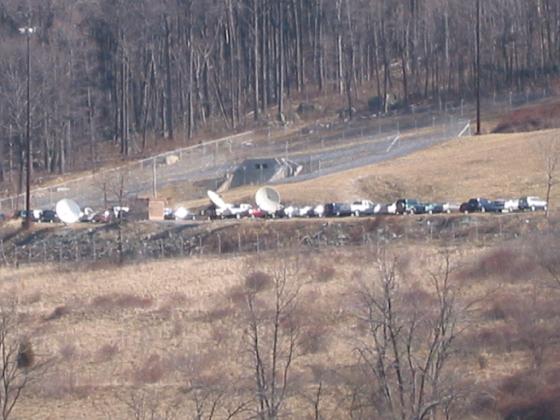
The Raven Rock Mountain Complex (RRMC) is a United States
government facility on Raven Rock, a mountain in the U.S.
state of Pennsylvania. It is located about 14 km (8.7 miles)
east of Waynesboro, Pennsylvania, and 10 km (6.2 miles)
north-northeast of Camp David, Maryland. It is also
called the Raven Rock Military Complex, or simply Site R.
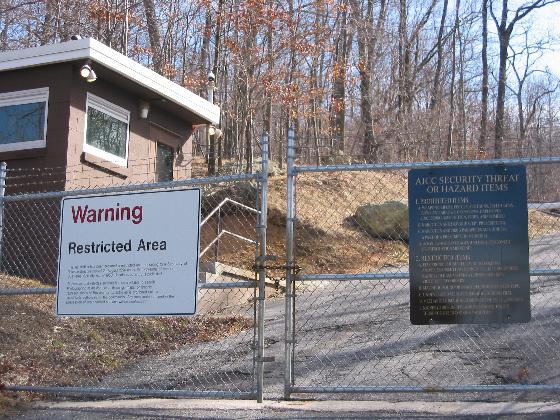
Other designations and nicknames include "The Rock", NMCC-R
(National Military Command Center Reservation), ANMCC
(Alternate National Military Command Center), AJCC
(Alternate Joint Communications Center), "Backup Pentagon",
or "Site RT"; the latter refers to the vast array of
communication towers and equipment atop the mountain.
Colloquially, the facility is known as the Underground
Pentagon.
At the RRMC, the Defense Information Systems Agency
computer operations staff provides computer services
to the National Command Authority, the Joint Chiefs
of Staff, the Office of the Secretary of Defense and
other United States Department of Defense agencies.
Its largest tenant is not the Defense Threat Reduction
Agency;[1] the largest tenants are the ANMCC (Alternate
National Military Command Center), JSSC (Joint Staff
Support Center), OSD/DHS (Office of the Secretary of
Defense/Department of Homeland Security), and the
114th Signal Battalion. RRMC also houses the emergency
operations centers for the Army, Navy and Air Force.
The facility runs more than 38 communications systems
for its users.
Many of the facility's activities are classified, and
distribution of most unclassified information
about the facility is discouraged by the government.
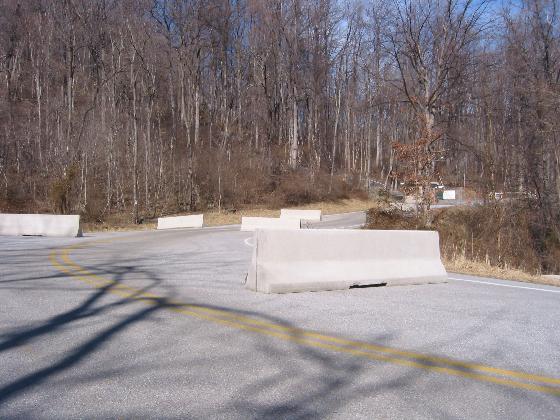
Planning for the site began in 1948. After the Soviet
Union detonated its first nuclear weapon in 1949, a
high priority was established for the Joint Command Post
to be placed in a protected location near Washington, D.C.,
for swift relocation of the National Command Authorities
and the Joint Communications Service. The site is near
Camp David (then known as "Shangri-La"). In 1950,
President Harry S Truman approved making Raven Rock part
of Camp Albert Ritchie, Maryland. This new site was named the
Alternate Joint Communications Center (AJCC) Site R.
Construction of the facility began in 1951, and in
1953 it became operational.
In 1977, the Department of Defense created the Special
Projects Office (later to become the Protective Design
Center)to work on the classified Alternate National
Military Command and Control Center Improvement Program,
which sought
to design a deep underground, hardened command and
control center. The plans envisioned separate structures
for command personnel, power, fuel, and water; more
than three miles of air entrainment tunnels; and access
shafts to the surface. The program was canceled in 1979.
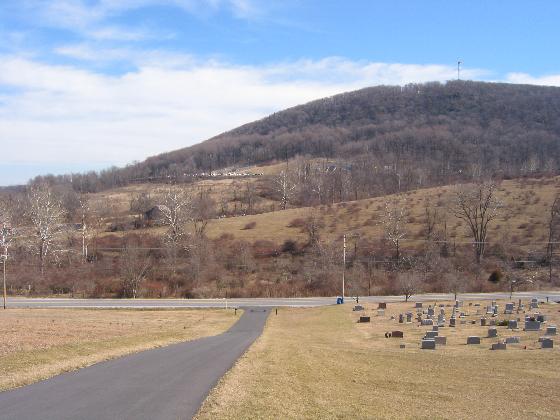
The RRMC was one of the "undisclosed locations"
frequently used by Vice President Dick Cheney
following the September 11, 2001 terrorist attacks.[3]
On May 25, 2007, the Federal Register published a Defense
Department policy declaring that it is unlawful for any
person "entering in or on the property" "to make any
photograph, sketch, picture, drawing, map or graphical
representation of the Raven Rock Mountain Complex
without first obtaining the necessary permission.

The secret complex lies 650
feet below the summit of Raven Rock which stands 1,529
feet tall. This mountainous military facility has just
about everything that you would ever need to survive
here including a restaurant, fitness center, barbershop,
legal services, chapel, 6 1,000 kilowatt generators
and much more.
The 6 storey high underground facility was visited by 5
helicopters and a convoy of SUVs within hours of the 9/11
attack on the Pentagon according to people who live nearby
the facility: was it the President or Vice President
taking cover in the granite fortress at Raven Rock?
Nobody knows for sure.
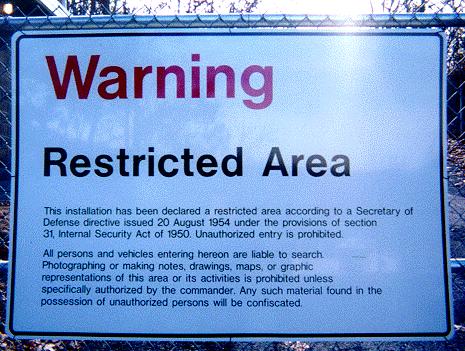
|

